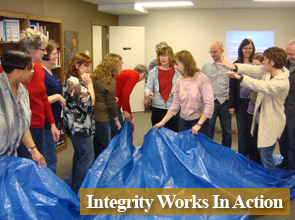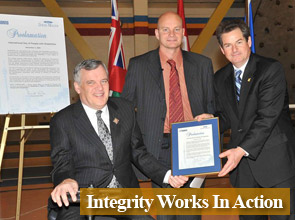It’s just as important for organizations to have values to guide them as it is for individual people. Values are what provide us with direction; they are necessary to set a moral compass to help us make decisions. They guide us in our relationships, and in organizations, they are the fundamental backbone of trusting high performing teams.
Living values begins with leadership. A clear, commonly held mission and the allegiance to the values that help achieve this mission, starts with leaders who communicate and model what the organization is all about. These are leaders who understand that investing time and energy in being value based generates significant economic and moral returns.
There are some very specific processes that can orient everyone to commonly shared values and help make your workplace a safe, positive, and inspiring place to be.
1) Hire people whose values are consistant with those of the organization. Ask values based questions in the interview. “Tell me about your values and how you live by them in your personal and professional life?” “We value innovation, could you give an example of how you were innovative”
2) Regularly involve everyone in the review and formation of your organization’s values and explain how they will help accomplish your organization’s mission. People are far more likely to follow ideas and standards if they feel they had a part in their creation.
3) Break your values down into observable measurable behaviours. Concepts like “respect” could have many personally defined meanings, but the concrete behaviours you’ve all agreed fit with that value (such as asking someone why they handled a situation the way they did rather than immediately “correcting” them) are what helps the values become real and consistent.
4) Refer to your organization’s mission and values frequently in both internal and external communication. Keep values alive by using value words. Using words like transparency, justice, fun, respect, collaboration, and confidentiality for example, keeps those values on people’s minds and makes it more likely for accompanying value behaviours to occur.
5) “Catch” people living your organization’s values. Look for instances of that happening and point them out. Maybe invite everyone to recommend others whom they’ve caught living a value for awards or fun ceremonies or a mention in your newsletter.
6) Include values in performance reviews. Make it clear that results cannot circumvent values, and tie bonuses, advancement, and even continued employment to an expectation of demonstrated value based behaviour.
7) Invite feedback from others about whether they experience you living your organization’s values. If you say you value “inclusiveness” you might near the end of a meeting ask everyone before they leave whether they all felt their voices were heard and valued.
8) As a leader, you cannot help but have enormous influence either positively or negatively. You can inspire your people to great heights by modeling your organization’s values at every opportunity. Little inspires people more than a leader with integrity. Conversely, few things generate cynicism and value disruption more than a leader who does not “walk the talk”.
Living values as an organization involves far more than merely listing them on a website. As in our own personal lives, living values requires commitment, and an ongoing honest review to ensure that it’s not all just talk.
Living values can be difficult, but there’s no doubt that there’s a huge payoff-both for organizations and for individuals.
Theo Selles, M.Sc.
President, Integrity Works
647-686-0116












